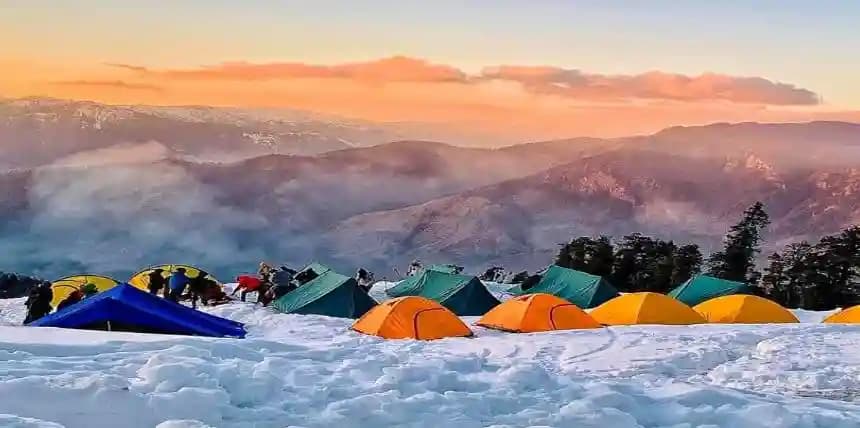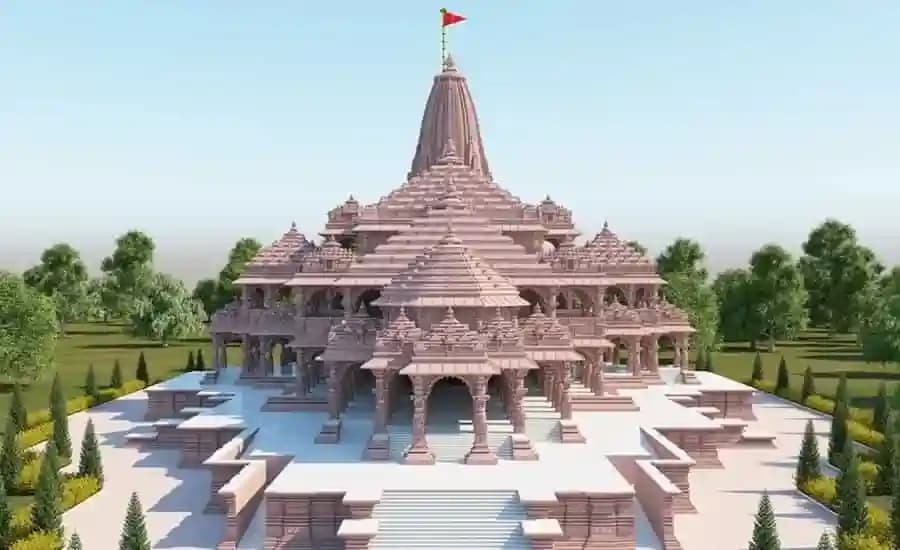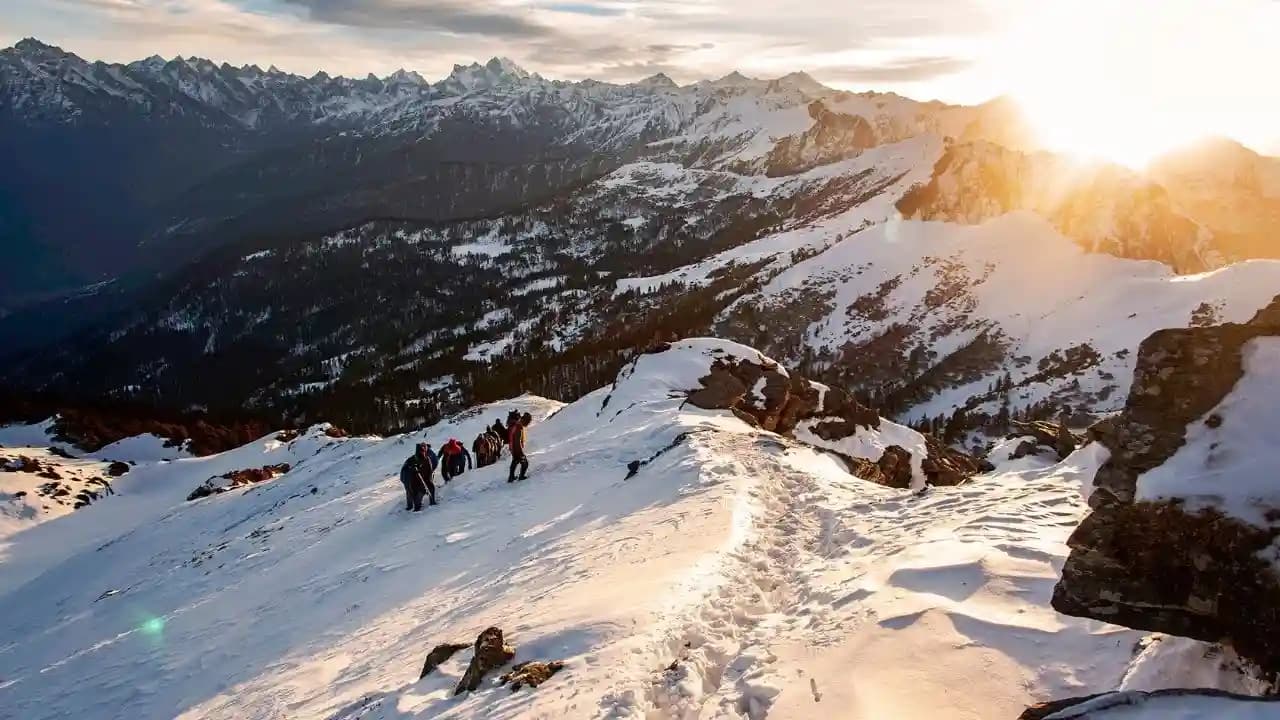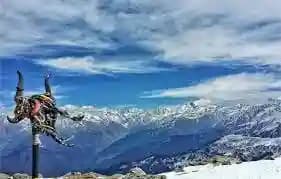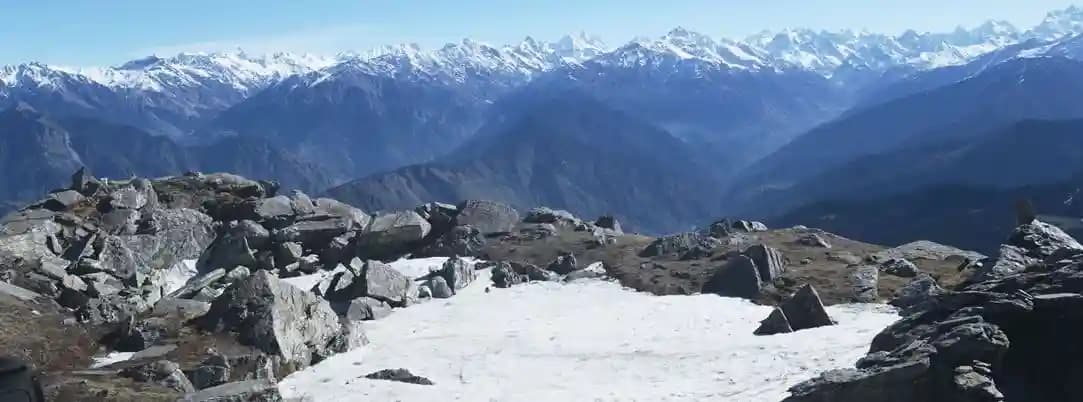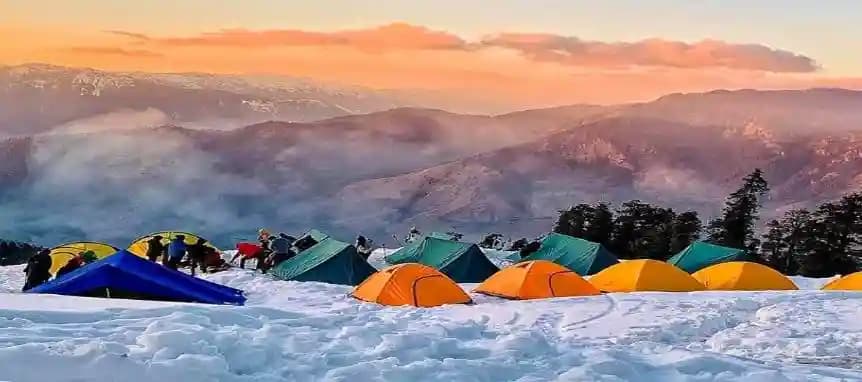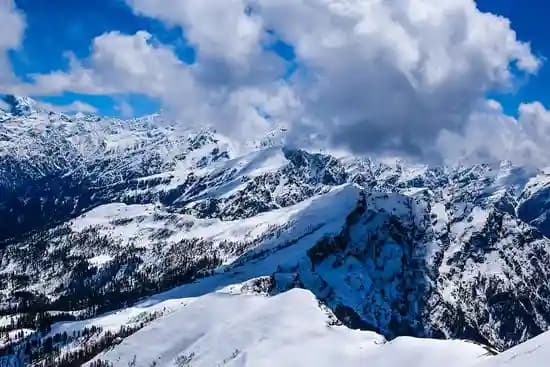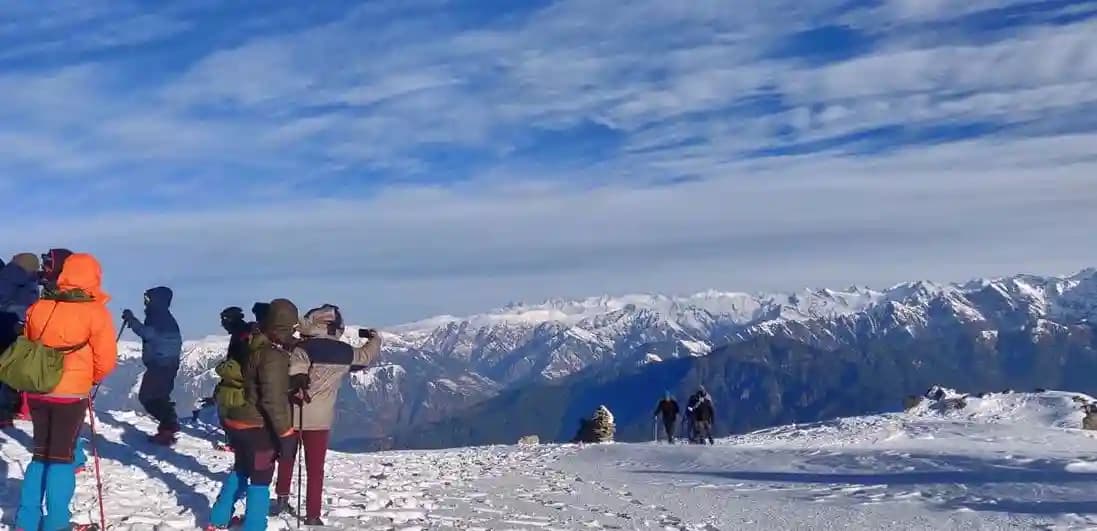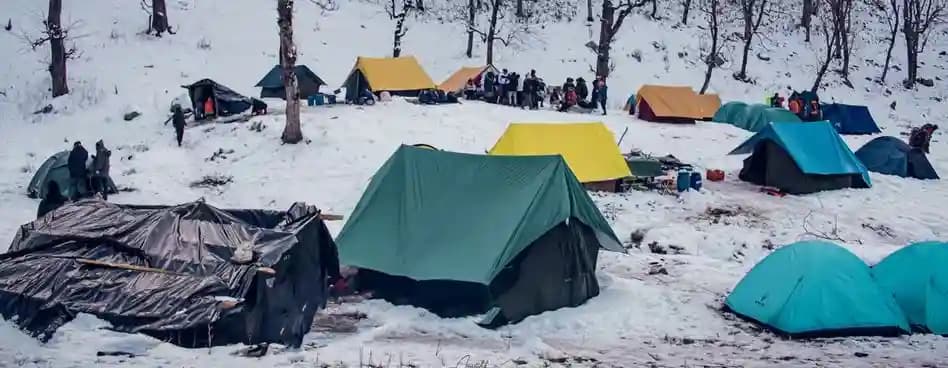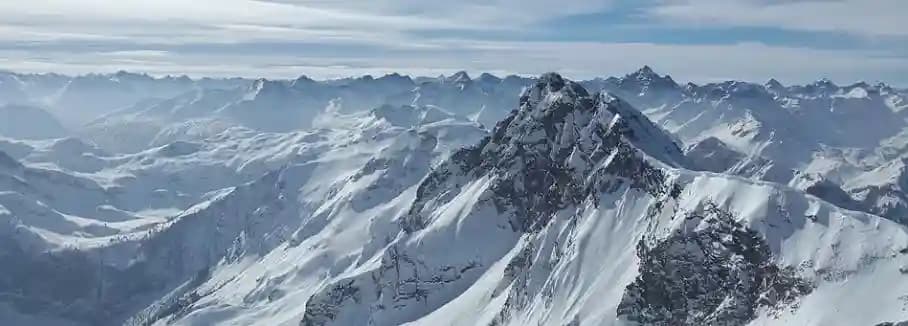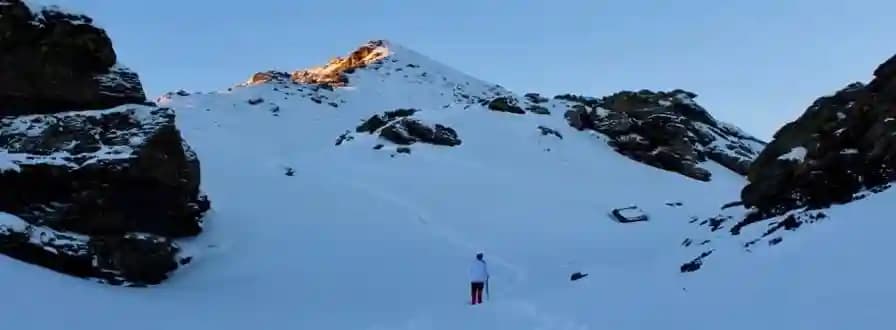Kedarkantha is a tall and mighty mountain peak, elevated at 12,500 feet in the Himalayas in Uttarakhand. The kedarkantha Trek is famous for the vast variety of flora and fauna it has to offer. Whether walking on a snow blanket in winter or trekking through the glossy green pine in summers, it is a delightful and beautiful journey to take. Placed in Govind Ballabh Wildlife Sanctuary and Govind Ballabh National Park, you can choose this trek route for when your heart is craving for some quiet time away from the city.
The Kedarkantha trekking duration usually takes up to 6 days to finish, which makes a fairly long yet easy trek; a perfect choice for beginners. Since it is a summit climb, there’s always a sense of accomplishment and satisfaction when you reach the Kedarkantha Peak. When it comes to choosing the right season for visiting the trek, you have to keep in mind a lot of things; most of all your own preference. Every season comes with a different Kedarkantha Weather so in the end you have to decide what works for you best.
In this blog, we will discuss the best time to visit the Kedarkantha trek and explore the Kedarkantha trekking packages crafted by Capture a Trip. You can always reach out to us if you have any questions or concerns.
Which month is best for Kedarkantha trek | Season
The best months for the Kedarkantha trek are typically December to April, during the winter season. This period offers the most enchanting experience as the trail is covered in a pristine blanket of snow, creating a breathtaking winter wonderland in the Himalayas.
Here is the Best Season and month to visit kedarkantha trek
1. Kedarkantha Trek in Spring (March-April)
2. Kedarkantha Trek in Summer (May-June)
3. Kedarkantha Trek in Monsoon (June to August)
4. Kedarkantha Trek in Autumn (September-November)
5. Kedarkantha Trek in Winter Season (December-February)
1. Kedarkantha Trek in Spring (March-April)
In March, you will still find residual snow lingering from the winters just gone by; more on the higher altitude. It will still have the beginnings of the spring season in the form of Rhododendrons and the fresh exposed grasslands. April will be a goodbye to any snow remaining with the Spring season in full swing. A splash of colour will be there wherever you turn with a carpet of meadows especially on lower altitudes. The days will be longer and much brighter with the nights becoming more bearable. This season offers pleasant weather for trekking amongst the beauty of nature.
2. Kedarkantha Trek in Summer (May-June)
In May, Kedarkantha sees a fairly warm morning joined by colder evenings and nights; although they are not harsh as compared to other seasons. The sun is bright on top and it could even be considered hot by a lot of people. On the other hand, June welcomes the occasional rainfall but it is rare and not very heavy. The best part about trekking at this time would be that in Summers most people go for treks with higher altitudes. This means that Kedarkantha is not really crowded and offers you enough isolation if that is that you are looking for. You will not find any snow in this season.
Read Blog: A Complete Guide to Kedarkantha Trek Route
3. Kedarkantha Trek in Monsoon (June to August)
Trekking enthusiasts often contemplate embarking on the Kedarkantha trek during the monsoon season, from June to August, seeking a unique and verdant experience. While the lush landscapes and fresh greenery can be enticing, it's important to consider the challenges that come with monsoon treks. The trails can become slippery, and frequent rain showers may obscure visibility, making navigation tricky. Additionally, the risk of leeches and the possibility of swollen rivers must be taken into account. However, for those seeking solitude and a different perspective of the Himalayas, the Kedarkantha trek in the monsoon can be a rewarding endeavor. It's advisable to be well-prepared with rain gear, suitable footwear, and a keen awareness of the weather forecast to make the most of this offbeat trekking experience. Travelers often choose this season for its unique ambiance, but it's essential to approach it with caution and adequate preparation, whether independently or as part of a Kedarkantha trek package.
4. Kedarkantha Trek in Autumn (September-November)
Who doesn’t like that crisp and fresh air of the winter without the terrible cold it brings along? Well, the Kedarkantha weather in autumns is much like that. The forests look almost alive with the pleasant breeze brewing in the air and the meadows look fresh from the monsoon seasons almost at their end. The view of the Himalayas on top is super clear. Although these months do start bringing in the cold especially in November. The Kedarkantha temperature going as low as zero during the nights. There is still a lot of green in the mountains at this point, so if you’re someone who wants to enjoy the greenery with a hint of cold; well, this one is the perfect weather for you to visit Kedarkantha.
5. Kedarkantha Trek in Winter Season (December-February)
Trekking to Kedarkantha in December can be a wonderful experience, as the landscape is covered in snow, creating a picturesque winter wonderland. However, it's important to be aware that trekking in December also comes with some challenges and risks due to the harsh winter conditions in the Himalayas
Fresh snowfall and cold days mark the entrance of the winter season in Kedarkantha. Starting at the end of December, the snow keeps falling till mid-February. Nights are terribly cold in this weather, with days offering little to no respite. But with the right layering, the winter trek becomes the most enjoyable trek of all. The best part is that mid-January to February brings little crowd, leading to a quiet and pleasant trek. During peak winters, the trail might me blocked by snowfall for 2-3 days so be ready for that. But that is all a minor convenience in the face of a blanket of beautiful snow.
Begin your thrilling adventure with CaptureATrip on the Kedarkantha Trek, starting in Sankri near Dehradun. Get ready to be amazed by the stunning scenery of the Garhwal region. Explore the beauty of the Kedarkantha Trek from Delhi, Sankri, Dehradun with CaptureATrip.
How is Kedarkantha in December?
Kedarkantha in December is a beautiful, challenging trekking experience and it is safe in december . Here are some key aspects to consider when planning a trek to Kedarkantha during this month:
1. Snow-Covered Landscape: In December, the entire region is covered in a thick blanket of snow, transforming the trekking trail and the surrounding scenery into a pristine winter wonderland. The snow-covered forests, meadows, and mountains create a picturesque setting, making it a popular choice for winter trekkers and photographers.
2. Cold Temperatures: December is one of the coldest months in the Kedarkantha region. Daytime temperatures can range from 5°C to -5°C, while nighttime temperatures can drop even lower, often below freezing. Be prepared for extremely cold conditions and make sure to carry high-quality winter gear, including insulated jackets, thermal clothing, gloves, and warm sleeping bags.
3. Challenging Terrain: Trekking in snowy conditions can be physically demanding and requires a good level of fitness. The snow can make the trail slippery and challenging to navigate, especially in steep sections. Trekking poles and microspikes or crampons are essential for stability and safety.
4. Shorter Daylight Hours: December has shorter daylight hours, so it's essential to start your trek early in the morning to make the most of the available light and reach your destination before nightfall.
5. Stunning Views: Despite the challenges, trekking to Kedarkantha in December offers breathtaking views of snow-clad peaks and the surrounding Himalayan ranges. On clear days, you can see prominent peaks like Swargarohini, Bandarpoonch, and Black Peak.
6. Solitude: Compared to the peak trekking seasons of spring and summer, December tends to have fewer trekkers. If you prefer a more secluded and peaceful trekking experience, this can be a good time to visit.
7. Altitude and Acclimatization: Kedarkantha's summit is at an altitude of around 12,500 feet (3,800 meters). Proper acclimatization is essential to avoid altitude sickness. Plan your itinerary with gradual altitude gain and spend a day at the base camp for acclimatization.
8. Weather Uncertainty: Weather conditions in the Himalayas can change rapidly, so be prepared for sudden snowstorms and fluctuations in visibility. It's crucial to stay informed about the weather forecast and be flexible with your trekking schedule.
In summary, Kedarkantha in December offers a unique and magical trekking experience with its snowy landscapes and stunning views. However, it also presents challenges related to cold temperatures and snowy terrain. Ensure that you are well-prepared, physically fit, and have the appropriate gear and clothing to enjoy a safe and memorable trek during this time of year. Consider joining a guided trek or traveling with experienced companions for added safety.
How many days are required for the Kedarkantha trek?
The duration required for the Kedarkantha trek take usually spans 5 to 6 days. trekking times can vary depending on individual fitness levels and weather conditions. Some trekkers might choose a slightly shorter itinerary by combining days or opt for a longer itinerary if they want to explore the region more thoroughly. Additionally, it's essential to include a buffer day in your itinerary in case of unexpected delays due to weather or other factors. Always consult with your trekking company or guide for the most up-to-date and specific itinerary for your trek
How high is the Kedarkantha trek?
Kedarkantha height:
The Kedarkantha trek height is 12,500 feet (3,810 meters) above sea level. This prominent summit offers trekkers a remarkable opportunity to explore the pristine beauty of the Himalayas.
The journey to the Kedarkantha summit commences from the picturesque village of Sankri, situated at an altitude of around 6,500 feet (1,981 meters). Sankri serves as the starting point for this trek and offers a serene setting surrounded by lush greenery. From here, trekkers embark on their ascent, which unfolds gradually to allow for acclimatization, making it accessible to trekkers of varying experience levels.
As trekkers ascend towards the Kedarkantha summit, the landscape undergoes a stunning transformation. The trail leads through dense pine and oak forests, tranquil meadows, and during the winter months, snow-covered terrain that adds an element of magic to the trek. The gradual gain in altitude allows trekkers to witness the region's unique flora and fauna, creating a sense of wonder and appreciation for the natural world.
Reaching the Kedarkantha summit is a moment of triumph, and the panoramic views from this lofty vantage point are simply breathtaking. Surrounded by other majestic peaks of the Himalayan range, trekkers are treated to a 360-degree vista of snow-draped mountains that create lasting memories and a profound connection with nature's grandeur.
In essence, the Kedarkantha trek height showcases the majesty of the Himalayas and invites adventurers to embark on an unforgettable journey. It's an opportunity to challenge oneself, connect with nature, and revel in the beauty of the mountains. Whether you seek adventure, tranquility, or a taste of both, Kedarkantha's elevation offers an extraordinary experience in the heart of the Himalayas.
Is Kedarnath trek difficult?
The Kedarnath trek can be challenging but is generally considered to be of moderate difficulty. The level of difficulty can vary based on factors such as your fitness level, prior trekking experience, and the time of year you choose to trek. Here are some key factors to consider:
Altitude: The trek to Kedarnath takes you to an altitude of approximately 11,755 feet (3,583 meters) at the temple. Altitude-related challenges such as altitude sickness can affect trekkers, so it's important to acclimatize properly and ascend gradually to minimize the risk.
Distance: The trek is approximately 16 kilometers (10 miles) one way from Gaurikund, which is the starting point for most trekkers. The distance may not be very long, but the terrain can be steep in places, making it moderately challenging.
Weather Conditions: The weather in the region can be unpredictable, especially during the monsoon season (July to September) when heavy rain and landslides are possible. In winter, the trek can be challenging due to heavy snow and extremely cold temperatures.
Trail Conditions: The trail varies from well-maintained paths to rocky and uneven terrain. In some sections, you may encounter steep ascents and descents, as well as narrow pathways.
Pilgrimage Season: During the pilgrimage season (May to October), the trek can get crowded, and accommodations in the area can fill up quickly. This can add to the logistical challenges of the trek.
Fitness Level: While the trek is considered moderate, having a reasonable level of fitness is important to enjoy the trek comfortably. Regular walking and endurance training can help prepare you for the trek.
Pony and Palanquin Services: For those who find the trek challenging, there are options to hire ponies or palanquins to carry you or your luggage. However, keep in mind that these services may not be available year-round and are subject to weather conditions.
Conclusion
The best time for the Kedarkantha Trek is crucial to ensuring a safe and memorable adventure. Each of the six seasons presents unique experiences, from the winter wonderland to the vibrant spring and summer landscapes. The Kedarkantha Trek, particularly when organized through a Kedarkantha Trek package from Delhi, allows you to immerse yourself in the stunning Himalayan vistas and embrace the thrill of the journey. Whether you prefer the challenge of a snow-covered trail or the lush greenery of warmer months, planning your trek according to your preferences and fitness level will make your Kedarkantha adventure an unforgettable and rewarding experience.
At Capture a Trip, our team of experts meticulously crafts personalized itineraries, enriched with local insights, to cater to your unique travel needs. Whether you're a solo explorer, a family seeking new experiences, or a group of friends eager to immerse yourselves in the best time for Kedarkantha's beauty and culture, Capture a Trip has got you covered.
With Capture a Trip, your journey through Kedarkantha becomes an immersive and enriching experience. Feel free to contact us at 9711975564 to learn more about the best places to visit and to discover the perfect Kedarkantha tour package tailored to your preferences and desires. Your adventure awaits, and we're here to make it unforgettable.
